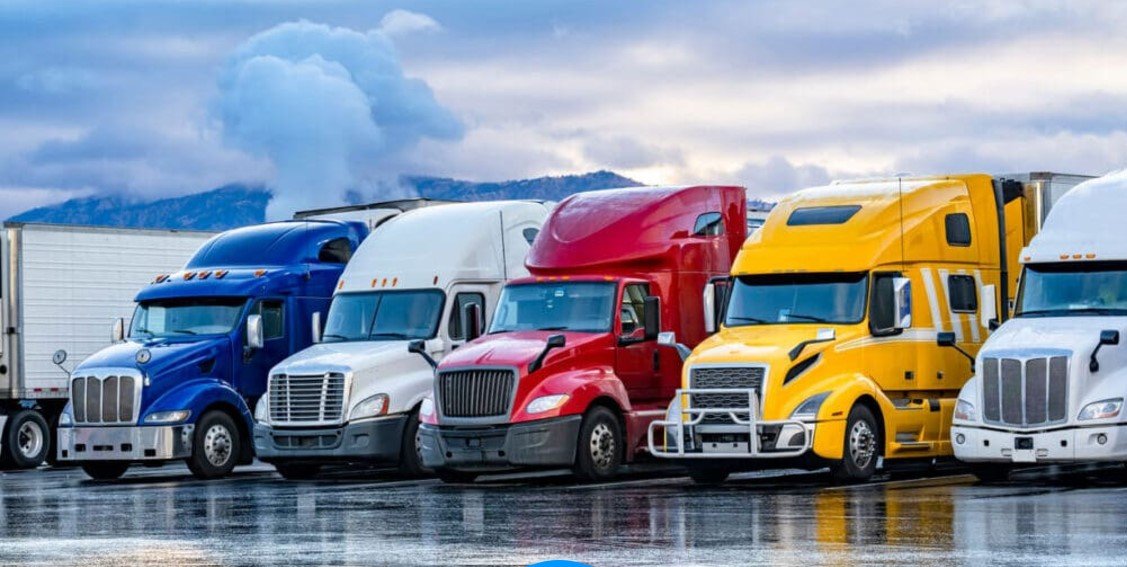10 Importent Factors That Affect Truck Insurance Premiums

10 Importent Factors That Affect Truck Insurance Premiums
Whether you run a bigger fleet or are an independent operator, any owner must pay a necessary cost: truck insurance. Still, the cost of vehicle insurance rates will vary greatly between companies. Knowing the elements that affect these premiums will enable you to control your expenses and select the correct coverage for your requirements. This page will go over the main elements influencing truck insurance rates and offer ideas on how you might cut your premiums.
Understanding Truck Insurance Premiums
One should first know how insurance rates are computed before delving into the elements influencing them. Insurance companies assess the risk involved in covering a truck and driver. The premium is higher than the perceived risk. There are several elements involved in this assessment; knowledge of these elements will enable you to make wise selections.
Type of Truck and Its Usage
One of the primary factors influencing truck insurance rates is the type of truck you own. Each of the several sizes, types, and configurations that trucks come in has a varying degree of risk. Because of their size and propensity to cause more damage in the case of an accident, larger trucks—including semi-trucks and heavy rigs—usually have higher rates.
Your premiums also heavily depend on how you use your truck. For instance, premiums on a truck used for long-distance interstate goods transportation will usually be higher than those on one utilized for local use or delivery. The vehicle spends more time on the road, and the distance increases its exposure to potential accidents, thereby increasing insurance costs.
Driver’s Experience and Driving Record
Determining insurance rates mostly depends on the driving history and experience of the truck driver. Insurance companies frequently review drivers’ records to evaluate risk. Insurance companies consider a driver with years of experience and a clean driving record as less dangerous, potentially leading to reduced rates.
Conversely, a driver’s rates may be higher if they have a history of accidents or traffic violations, including DUI charges or speeding citations. Insurance firms charge more to mitigate the risk they associate with inadequate driving records—an elevated likelihood of accidents.
The Age of the Truck
The ageThe Age of the Truck of the truck significantly influences insurance rates. Because of their greater value and the cost of repairs or replacement should damage arise, newer trucks are usually more expensive to insure. Though they still have a higher initial cost, newer trucks may have sophisticated safety systems that might help reduce premiums.
Older trucks, on the other hand, can be more costly to maintain and repair, even if their value qualifies for a lower insurance cost. Insurance providers may charge higher premiums for older cars due to the increased likelihood of breakdowns or repair expenses. Furthermore, older trucks could lack the contemporary safety measures meant to help reduce premiums.
The Truck’s Weight and Load
Both truck weight and load type affect premiums. Heavyweight trucks that transport hazardous or bulk goods are considered higher-risk vehicles. This is due to the increased risk of damage in the event of an accident, as well as the potential for injuring other drivers. If your truck regularly transports hazardous products like chemicals or explosives, your insurance premium is likely to increase due to the aggravation of environmental hazards and the potential for more severe accidents.
Conversely, vehicles carrying smaller, non-hazardous cargo may enjoy reduced rates due to their perceived lower risk. Compared to hazardous commodities or large loads, the risk level is relatively modest for truckers who mostly carry conventional goods like electronics, furniture, or other non-perishable products.
Location and operating area
The area in which your truck operates significantly influences your insurance rates. Trucks used in cities where theft, traffic congestion, and accidents are more frequent are sometimes subject to higher rates. Similarly, insurance companies view vehicles operating in severe weather conditions like heavy snow, rain, or excessive heat as more risky and may charge higher premiums.
On the other hand, working in rural or less populous locations, where the risk of theft and mishaps is smaller, can lower your rates. Insurers take into account the risk variables associated with your location, which means that your premiums will increase if your working environment is more hazardous.
Coverage types and policy limits
Your insurance premiums directly relate to the kind of coverage you choose and the limits you apply. Though it offers less protection, basic liability coverage is usually less expensive than more all-encompassing choices. Higher premiums are what you should expect if you choose more coverage limits—that is, collision, comprehensive, or liability limitations.
Your rate will increase in line with other policy options like cargo insurance, medical payments, and uninsured motorist coverage. Even though these coverages offer more protection, they increase the overall cost of the policy. To choose the appropriate policy for your circumstances, you must balance your budget with the coverage you need.
Claims History
The claims history of a trucking company or solo operator also influences truck insurance rates. Should your truck be involved in several claims or accidents, insurance firms could see you as more at risk. They might thus raise your rates to cover the higher possibility of future claims.
Maintaining a solid claims history can help you keep your premiums as low as feasible. You can achieve this by practicing safe driving, investing in truck maintenance, and ensuring routine maintenance and inspections of your trucks. Over time, a positive claims history can help you qualify for discounts or reduced rates.
Safety features and maintenance
Safety features on your truck can help lower your rates. Considered less dangerous and maybe eligible for discounts are trucks with modern safety technologies such as lane departure warnings, automatic braking, and anti-theft systems. Insurers understand that these characteristics serve to minimize the general risk by reducing the possibility of accidents and theft.
Maintaining good operational conditions for your truck through regular maintenance also helps reduce premiums. Insurers are more likely to provide good rates for companies that make investments in the maintenance of their vehicles since a well-kept truck is less prone to break down or be involved in accidents.
Fleet Size
Should you run a fleet of trucks, the total number of vehicles will affect your insurance rates. Usually, insurers qualify for savings based on the volume of insured vehicles. For companies that insure several vehicles on the same policy, insurers can provide multi-truck coverage or bulk discounts. In addition, larger fleets with more claims or accidents may pay higher rates.
Although smaller fleets or owner-operators could have greater trouble locating savings, their premiums could still be more reasonable than those of bigger companies with more cars running on the road.
Deductibles
Selecting a higher deductible will help lower your vehicle insurance rate. Before your insurance starts to pay, you pay out-of-pocket expenses known as a deductible. Agreeing to pay a greater deductible increases your risk in return for a smaller premium. For truck owners who wish to cut their total insurance rates but are sure they can handle minor expenses, this can be a suitable choice.
In summary
Any vehicle owner has to understand the elements influencing their insurance premiums. You may better negotiate the process of choosing a policy that matches both your demands and budget by examining the type of truck, its use, the driver’s record, and other elements. Although truck insurance might be costly, investing in safety features, keeping a clean driving record, and lowering risk will enable you to keep costs reasonable. In the end, selecting the appropriate insurance coverage is about striking a balance between affordability and sufficient coverage to guarantee roadside protection for your truck.






